Sheet metal fabrication is an art that combines precision engineering with creative design. Beyond the technical intricacies, one crucial aspect of sheet metal fabrication is the surface finishing. The finish not only defines the appearance of the final product but also plays a pivotal role in its durability, corrosion resistance, and overall quality. In the world of sheet metal fabrication, a wide array of surface finishing options exists, each with its unique benefits and applications.
Surface finishing in sheet metal fabrication is not merely a cosmetic afterthought; it's a critical step that significantly impacts the overall quality, performance, and longevity of the final product. From enhancing aesthetics to improving durability and functionality, surface finishing plays a pivotal role in sheet metal fabrication. Here's a closer look at why sheet metal surface finishing is of utmost importance in this manufacturing process:
1. Corrosion Prevention and Durability
Sheet metal components are often exposed to harsh environmental conditions, including moisture, chemicals, and varying temperatures. Without proper surface finishing, these elements can cause rapid corrosion and degradation of the metal. Applying coatings such as paint, powder coating, or plating forms a protective barrier that shields the sheet metal from corrosive agents, thereby extending the product's lifespan and maintaining its structural integrity.
2. Enhanced Aesthetics and Branding
The appearance of a sheet metal product can greatly influence its marketability and perceived value. Surface finishing allows manufacturers to create a visually appealing, consistent, and professional appearance. The choice of finish, whether it's a sleek metallic look, a matte texture, or a vibrant color, can align the product with the brand's identity and target audience.
3. Improved Functionality
Surface finishes can enhance the functionality of sheet metal components. For instance, adding a textured or non-slip finish to certain areas can improve grip and safety. Conversely, a smooth and polished finish might be preferred for parts that need to slide or move smoothly against each other. Functional finishes can contribute to the overall user experience and the product's intended purpose.
4. Tolerance and Precision Enhancement
Sheet metal finishing can be used strategically to improve tolerances and precision. By applying controlled finishes to specific areas, manufacturers can ensure that mating parts fit together with greater accuracy, reducing the likelihood of gaps, misalignments, or interference issues.
5. Ease of Maintenance
Sheet metal components that undergo surface finishing are often easier to clean and maintain. Smooth, even finishes prevent debris from accumulating, making routine cleaning more efficient. This is especially crucial in applications where hygiene and cleanliness are essential, such as medical equipment, kitchen appliances, and industrial machinery.
6. Resale Value and Customer Satisfaction
Products with high-quality surface finishes tend to command higher resale values and lead to greater customer satisfaction. Consumers are more likely to trust and appreciate items that exhibit a polished appearance and are resistant to wear and tear. Positive customer experiences can lead to brand loyalty and repeat business.
7. Customization and Versatility
Sheet metal surface finishing provides a range of customization options, allowing manufacturers to tailor products to specific requirements. Whether it's achieving a particular color, texture, or level of gloss, surface finishes can be adjusted to align with design preferences and market demands.
8. Compliance and Regulatory Considerations
Certain industries, such as automotive and aerospace, have stringent safety and regulatory requirements. Surface finishes must adhere to these standards to ensure the product's compliance and safe operation. Proper finishing can contribute to meeting these regulatory guidelines.
Sheet metal surface finishing techniques are diverse and offer a wide range of options for enhancing the appearance, durability, and functionality of sheet metal products. Here are some of the common sheet metal surface finishing techniques:
1. Painting and Powder Coating
Painting: Applying a layer of paint to the sheet metal surface is a classic finishing technique. It provides a range of color options and can add a protective layer that shields the metal from corrosion and environmental factors.
Powder Coating: Powder coating involves applying a dry powder onto the sheet metal and then curing it with heat to form a tough, durable finish. It's known for its resistance to chipping, scratching, and fading, making it a popular choice for various industries.
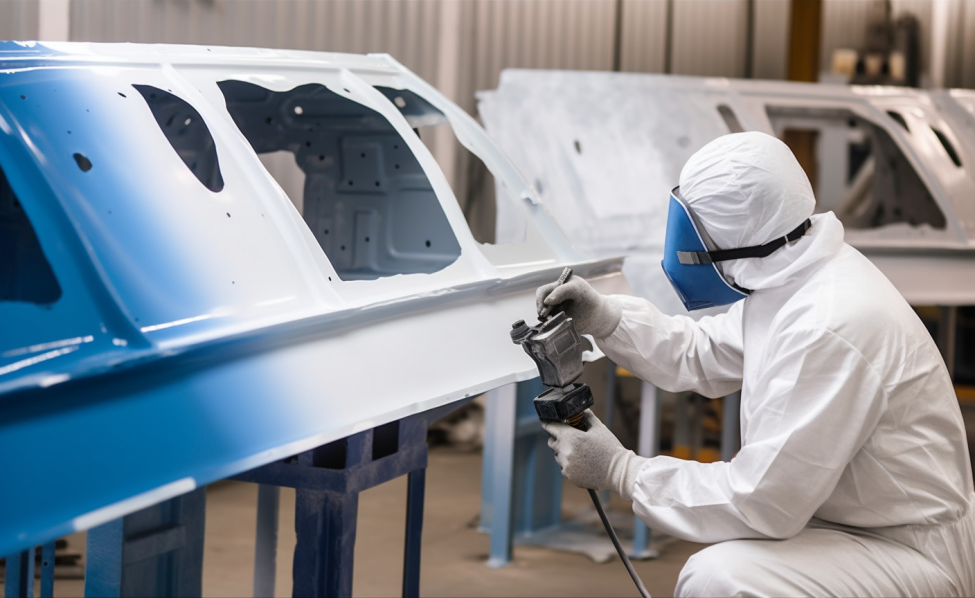
2. Anodizing
Anodizing is commonly used for aluminum sheet metal. It involves creating an oxide layer on the metal's surface through an electrolytic process. Anodized surfaces are more corrosion-resistant and can be dyed to achieve various colors while maintaining a sleek, metallic appearance.
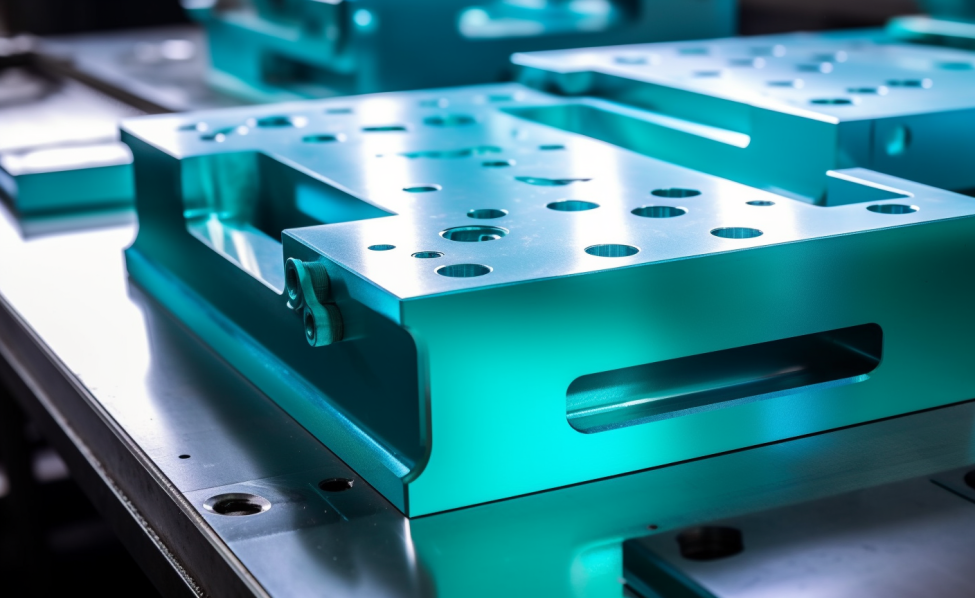
3. Plating
Plating involves depositing a layer of metal onto the sheet metal surface through electrochemical processes. Common plating materials include chrome, nickel, zinc, and copper. Plating not only enhances appearance but also improves corrosion resistance and wear resistance.
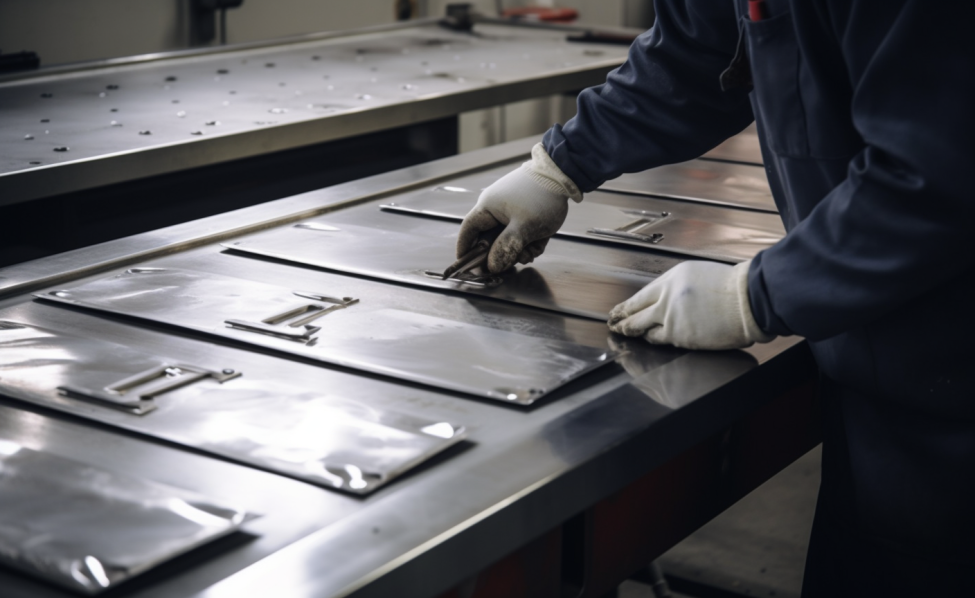
4. Brushing and Polishing
Brushing: Brushing creates a directional grain pattern on the sheet metal surface using abrasive materials or brushes. It is often used with stainless steel to achieve a distinctive look that masks scratches and wear.
Polishing: Polishing involves buffing the surface to achieve a smooth, reflective finish. This technique is used to create a high-gloss appearance on various metals and can range from satin to mirror finishes.
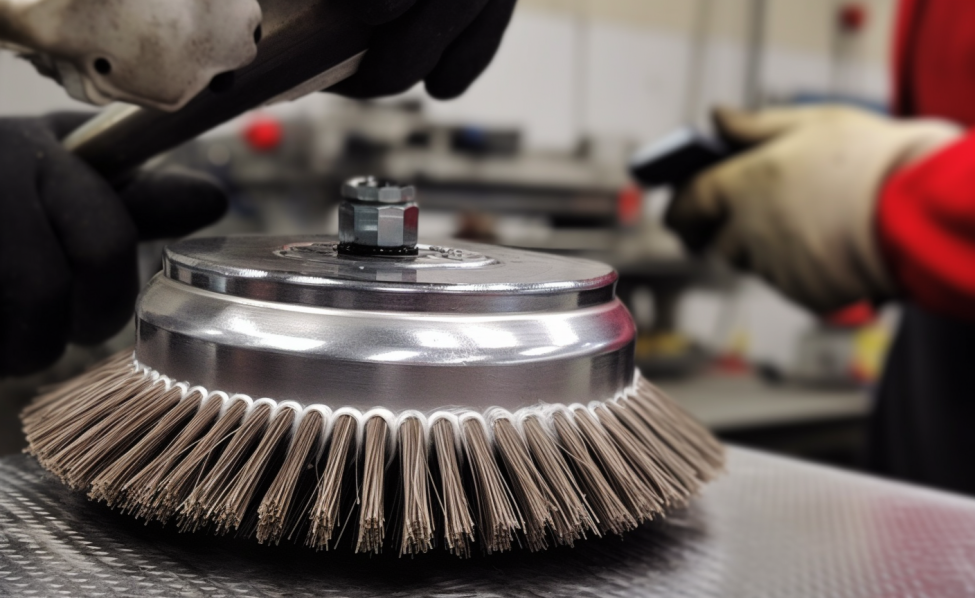
5. Bead Blasting
Bead blasting involves using fine abrasive particles to clean, deburr, and texture the sheet metal surface. It results in a uniform matte or textured finish that can hide imperfections and provide a consistent appearance.
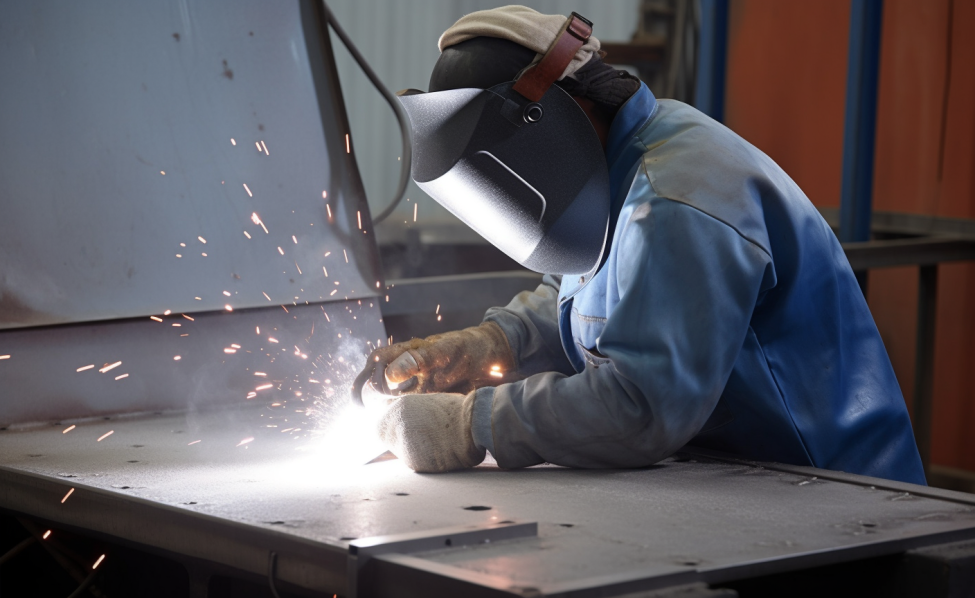
6. Chemical Finishes
Chemical finishing techniques alter the surface of the sheet metal through chemical reactions. Examples include:
Patina: A controlled oxidation process that forms a protective layer on metals like copper and bronze, giving them an aged and unique appearance.
Chemical Etching: Using chemicals to selectively remove material from the surface, creating intricate patterns, textures, or designs.
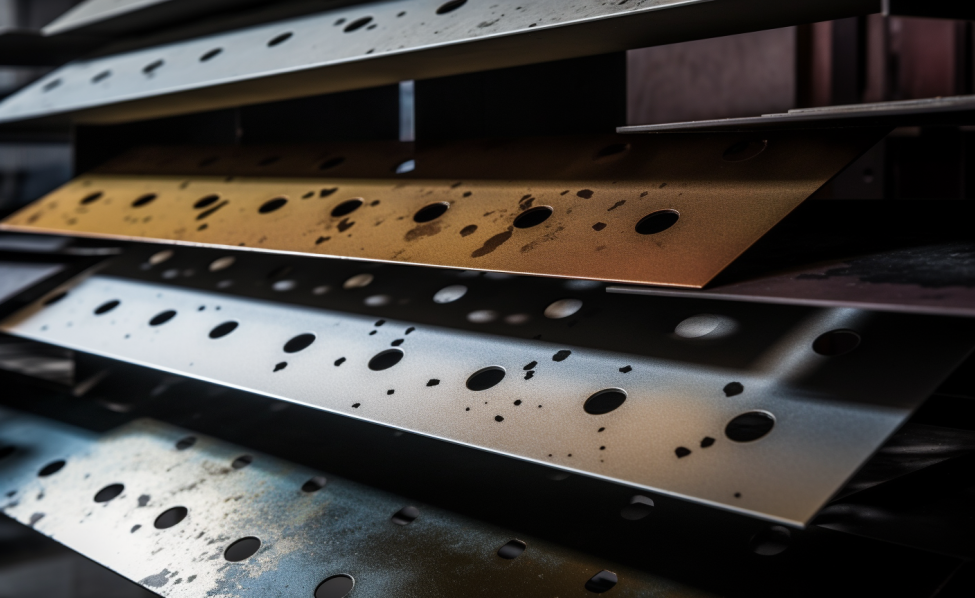
7. Laser Etching and Engraving
Laser etching and engraving use precise lasers to remove material from the sheet metal surface. This technique can create intricate designs, logos, and labels while adding a personalized touch to the product.
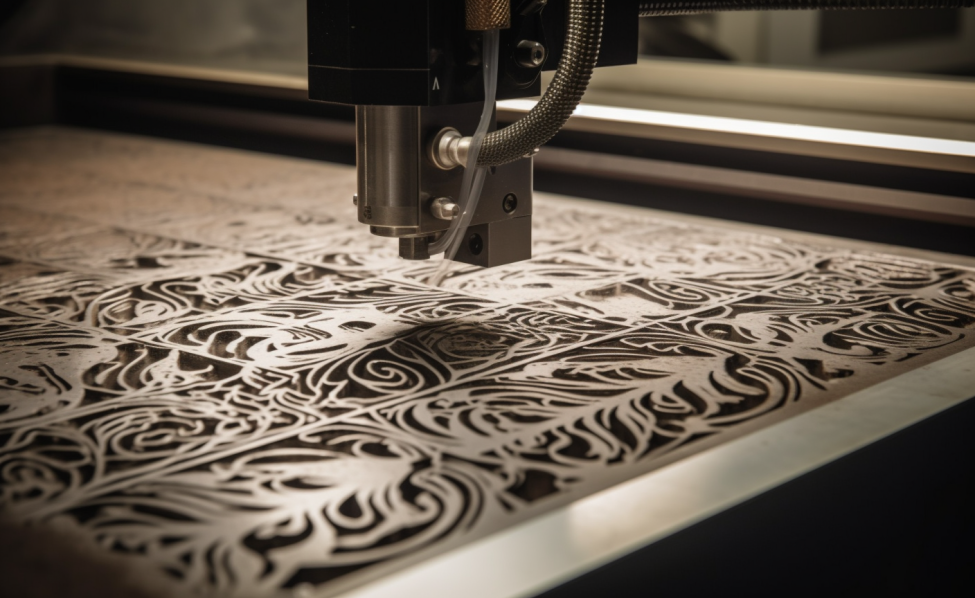
8. Clear Coating
Clear coatings, such as lacquers or clear powder coatings, provide a protective layer that maintains the natural appearance of the sheet metal while preventing oxidation and wear.
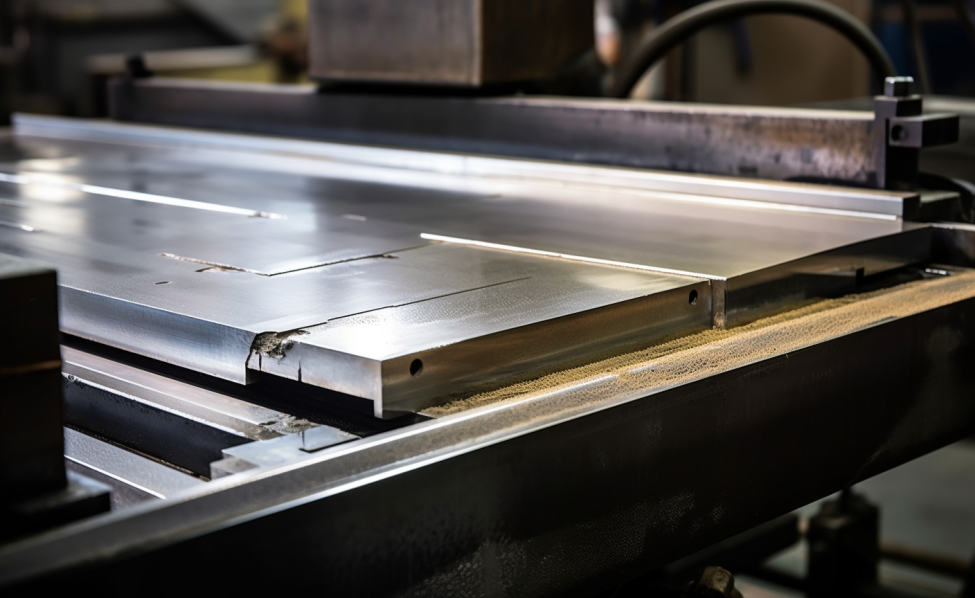
9. Decals and Graphics
Applying decals, graphics, or labels to sheet metal can enhance branding and communication. These can be covered with clear coatings for protection.
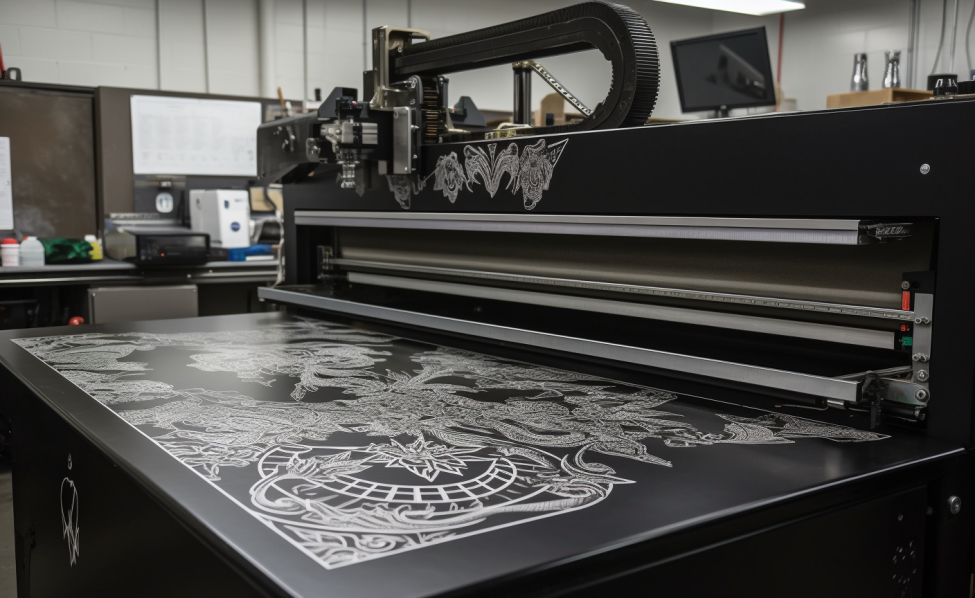
10. Embossing and Debossing
Embossing involves creating raised designs on the sheet metal surface, while debossing creates recessed designs. These techniques can add texture and visual interest.
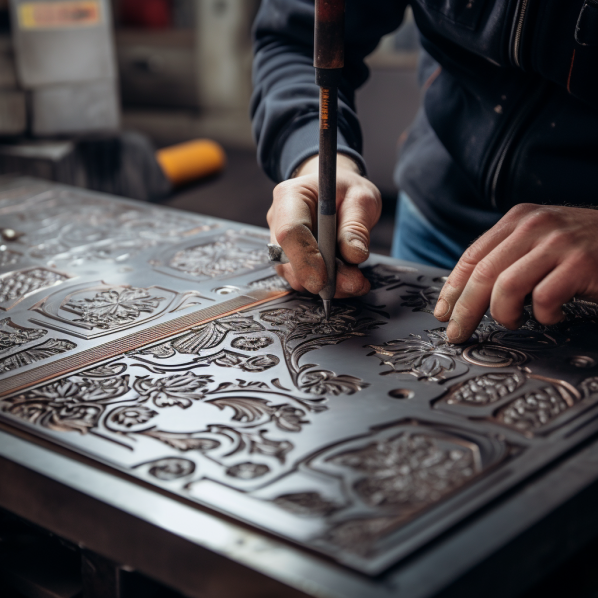
Each of these surface finishing techniques offers unique benefits and characteristics, making them suitable for different applications and industries. The choice of technique depends on factors such as the desired appearance, functional requirements, environmental conditions, and the material being used. By selecting the appropriate surface finishing technique, manufacturers can optimize the aesthetics, durability, and overall quality of their sheet metal products.
Sheet metal fabrication is a precise and intricate process that involves transforming raw metal into functional and visually appealing products. One of the crucial decisions in this process is selecting the appropriate surface finish. The right finish not only enhances the aesthetics but also contributes to the durability, functionality, and overall quality of the final product. In this guide, we will walk you through the key considerations for choosing the right finish during sheet metal fabrication.
The first step in selecting the right finish is understanding the specific requirements of your project. Consider the following factors:
1. Functionality: Determine the intended use of the sheet metal product. Does it require corrosion resistance, wear resistance, electrical conductivity, or other functional properties?
2. Environment: Consider the environment in which the product will be used. Will it be exposed to moisture, chemicals, UV radiation, or other potentially damaging elements?
3. Aesthetics: Think about the desired visual appearance of the product. Do you prefer a glossy, matte, textured, or colored finish?
4. Regulations and Standards: Are there any industry-specific regulations or standards that dictate the type of finish you need to use? Compliance is crucial, especially in industries like automotive, aerospace, and medical.
Different surface finishes interact differently with various materials. It's crucial to choose a finish that complements the base material in terms of compatibility and performance. For instance, stainless steel may be well-suited for brushing and polishing to achieve a sleek appearance, while aluminum can benefit from anodizing for enhanced corrosion resistance.
Surface finishing techniques vary in terms of cost. While some finishes may be more affordable, others require specialized equipment, materials, or processes that can impact your budget. Consider the long-term benefits and the added value the chosen finish brings to the product.
Before committing to a specific finish for mass production, it's advisable to conduct tests and create prototypes. This helps you evaluate the visual and functional aspects of the chosen finish on a smaller scale, allowing you to make any necessary adjustments before full-scale production.
Sheet metal fabrication experts and finish specialists can provide valuable insights and recommendations based on their experience. Consult with professionals who understand the nuances of various finishes and their implications on the final product. HSJ is a distinguished professional expert in the field of Sheet Metal Fabrication and Finish Specialization. With an exceptional background and extensive experience in this intricate domain, HSJ has established themselves as a leading authority in delivering unparalleled insights and recommendations.
In the realm of sheet metal fabrication, HSJ's expertise shines through as we possess an in-depth understanding of the complex processes involved in transforming raw metal into precision-crafted components and structures. Our comprehensive knowledge encompasses various techniques, ranging from cutting and bending to welding and assembling, ensuring that each step is executed with utmost precision.
However, what truly sets HSJ apart is our mastery of finish specialization. The finishing touch can make or break a product, and HSJ's proficiency lies in our profound grasp of different finishing methods and our profound implications on the final outcome. Whether it's selecting the ideal surface treatment for enhanced durability or choosing a finish that aligns seamlessly with the product's aesthetic, HSJ's recommendations are grounded in a wealth of practical experience and theoretical expertise.
| CORROSION RESISTANCE | COATING THICKNESS | ABRASION RESISTANCE | |
| Powder coating | Corrosion resistance depends on type of material used and the pretreatment process | Can range from 35 to 200pm | Heat cured finish |
| Surface must follow a pre-treatment process before powder coat or part will be at risk of corrosion and adhesion issues | Thicker than traditional liquid paint | Material composition and pre-treatment may have enhanced abrasion resistance | |
| Chips or incomplete coverage adds to the risk of corrosion | Improve appearance | Creates a hard finish that resists abrasion well | |
| Various colors and textures are available | |||
| E-coating | Good corrosion resistance | Typically 12 to 30 pm but can be more | Good durability |
| Provides physical and chemical barriers to corrosion | Often used to increase the surface thickness | Heat cured finish | |
| The thickness of the application is uniform | Good longevity | ||
| Zinc plating | Provides a physical barrier to corrosion | Can range from 5 to 25 um | Very strong finish |
| Acts as a sacrificial anode to prevent corrosion | If use as an undercoat for other finishes, poor adhesion | Highly durable to abrasion | |
| Parts can sustain minor damage and remain corrosion resistant | Best for detailed surfaces and not heavy-duty applications | ||
| Dacromet | Provides barrier resistance to corrosion | Between 5 to 7.6 pm | Good abrasion resistance |
| Creates a passivation effect on the surface | Can be used under a painted finish | Electrically conductive finish | |
| Good resistance to chemicals. organics, heat, salt | |||
| Anodizing | Good corrosion resistance | Ranges from 0.5 to 150pm | Hard, wear-resistant finish |
| Commonly used for saltwater or marine environments | Often used for parts that come in frequent contact with other material | ||
| Passivation | Good corrosion resistance through an inert, oxide layer | The process removes free iron from the surface leaving a thin and transparent oxide film | Does not change durability or abrasion resistance |
| Galvanized dipped | Provides barrier resistance to corrosion | At more than 254 pm the finish is prone to flaking | Often used in harsh environments because of durability |
| Acts as a sacrificial anode to prevent corrosion | Poor appearance | Good abrasion resistance | |
| Can adjust the thickness of finish to accommodate the needs | Good durability and longevity | ||
| Surface damage can result in corrosion | |||
| HSJ Finishes Work Sheet | ||||||
| COLD ROLLED STEEL | HOT ROLLED STEEL | SPRING STEEL | ALUMINUM | STAINLESS STEEL | COLD GALVANIZED STEEL | |
| Powder coating | x | x | x | x | x | x* |
| E-coating | x | x | x | |||
| Zinc plating | x | x | x | |||
| Dacromet | x | x | x** | |||
| Anodizing | x | |||||
| Passivation | ||||||
| Galvanized dipped | x | x | x | |||